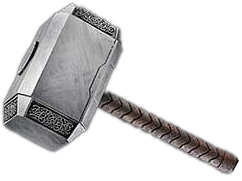Section1.2Homotopy
Subsection1.2.1Homotopies
We let \(\Map(X,Y) = \{f\colon X \to Y \text{ continuous}\}\). Then letting \(f_t(x) = F(x,t)\) in the above definition we see that \(f_t\) is a path from \(f_0\) to \(f_1\) in \(\Map(X,Y)\).
Example1.2.2
- \(X = Y = \RR^n\), \(f_0(\overline{x}) = \overline{0}\) and \(f_1(\overline{x}) = \overline{x}\) are homotopic via \(f_t(\overline{x}) = t\overline{x}\).
- \(S^1 = \{z\in \CC : |z| = 1\}\) then
- \(S^n = \{ \overline{x} \in \RR^n : |\overline{x}| = 1\}\)
Lemma1.2.3
Homotopy is an equivalence relation on \(\Map(X,Y)\).Lemma1.2.4
If \(f_0 \sim f_1\colon X \to Y\) and \(g_0 \sim g_1\colon Y \to Z\) then \(g_0\circ f_0 \sim g_1\circ f_1\).Corollary1.2.5
For any space \(X\) the set \([X,\RR^n]\) has one element.Proof
Definition1.2.6Contractible space
\(X\) is contractible if \(1_X\) is homotopic to a constant map.Proposition1.2.7
\(Y\) is contractible \(\iff\)\([X,Y]\) has one element for any space \(X\).Proof
Given a space \(X\) how can we tell if \(X\) is contractible? If \(X\) is
contractible then it must be path connected for one.
Proof
Definition1.2.8Simply connected
We say \(X\) is simply connected if \([S^1, X]\) has only one element. We say two spaces \(X\) and \(Y\) are homotopy equivalent if there exists \(f\colon X \to Y\) and \(g\colon Y \to X\) such that \(g\circ f \sim 1_X\) and \(f\circ g \sim 1_Y\).Example1.2.9
\(X\) is contractible if and only if \(X \sim \{p\}\).
Proof
Exercise 1.2.10
If \(X_0 \sim X_1\) and \(Y_0 \sim Y_1\) then \([X_0, Y_0]\) and \([X_1, Y_1]\) are in bijection.Given \(X\) and \(Y\) how can we determine if \(X\sim Y\)? How do we determine \([X,Y]\)? For example is \(S^n \sim S^m\).
Subsection1.2.2Homotopy groups
Definition1.2.11Map of pairs
A map of pairs\(f\colon (X, A) \to (Y, B)\) is a map \(f\colon X \to Y\) with sets \(A\subset X\) and \(B\subset Y\) such that \(f(A)\subset B\). If we have maps of pairs \(f_0, f_1\colon (X,A) \to (Y,B)\) then we write \(f_0\sim f_1\) if there exists \(F\colon(X\times I, A\times I) \to (Y,B)\) such that \(F(x,0) = f_0(x)\) and \(F(x,1) = f_1(x)\).Definition1.2.12Homotopy groups
If \(*\in X\) then the \(n\)th homotopy group is \[\pi_n(X, *) = [(D^n, S^{n-1}) \to (X, \{*\})].\]We now note several properties of this definition:
- \(\pi_0(X, *) =\) set of path components of \(X\).
- \(\pi_1(X, *)\) is a group. \(\pi_n(X, *)\) is an abelian group.
- \(\pi_n\) is a functor \[ \left\{ \begin{subarray}{l}\text{pointed spaces} \\ \text{pointed maps} \end{subarray}\right\} \to \left\{\begin{subarray}{l} \text{groups}\\ \text{group homomorphisms}\end{subarray}\right\}. \] So given \[f\colon(X, p)\to(Y,q)\] we get \[f_*\colon \pi_n(X,p)\to\pi_n(y,q)\] defined by \[f_*(\gamma) = f\circ \gamma.\]
Example1.2.13Homotopy groups of \(S^2\)
| \(n\) | 1 | 2 | 3 | 4 | 5 | 6 | 7 |
| \(\pi_n(S^2)\) | 0 | \(\ZZ\) | \(\ZZ\) | \(\ZZ/2\) | \(\ZZ/2\) | \(\ZZ/12\) | \(\ZZ/15\) |
